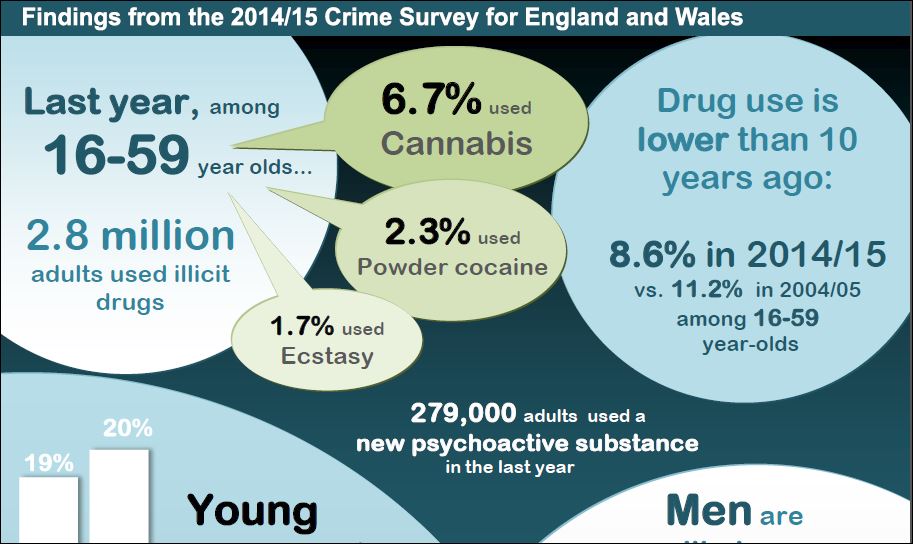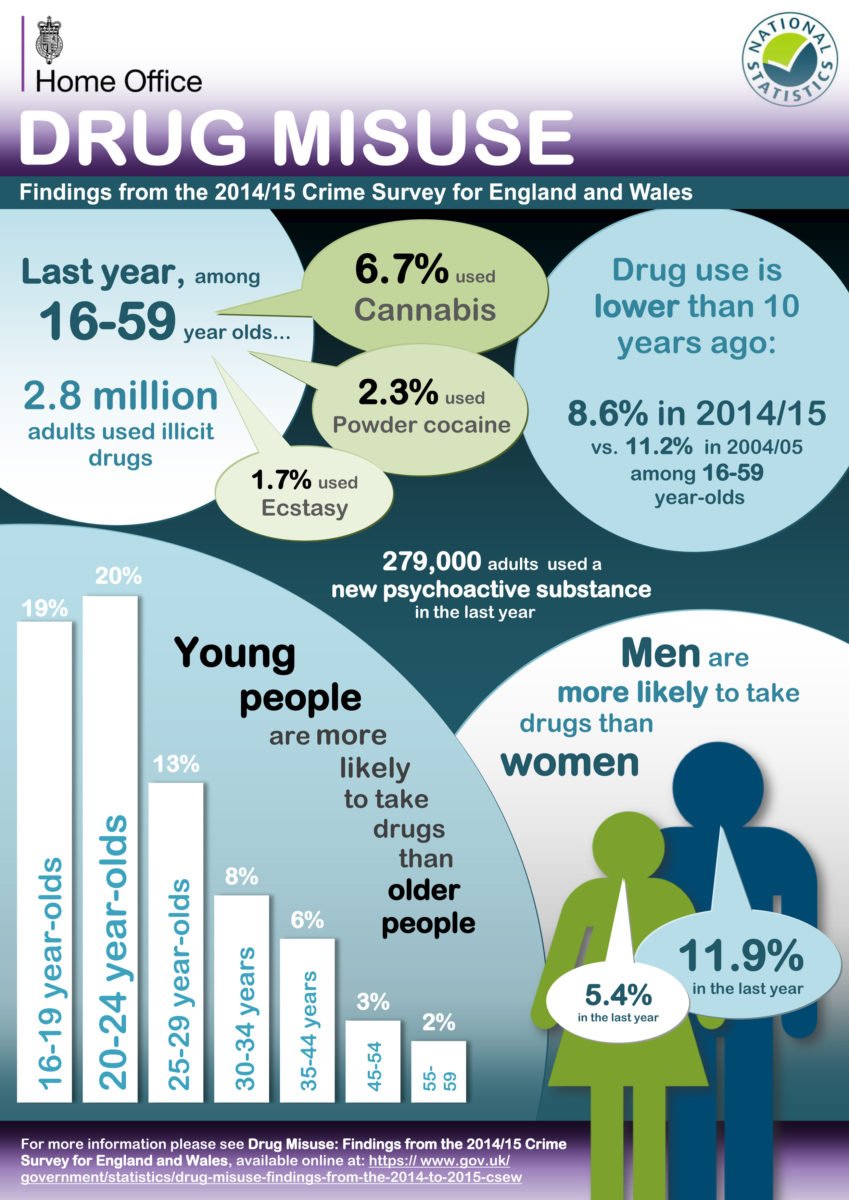Trends in drug use
Last year’s Crime Survey for England and Wales (CSEW) found an increase in the proportion of people using illegal drugs. This finding was in the context of a steady drop in levels of drug use over the previous 15 years and it wasn’t clear whether the rise was merely a blip or the start of a new upwards trend.
This year’s survey found overall levels of drug use were broadly similar but that young people (the data for 16-24 year olds are analysed separately) were using a number of substances more frequently.
Here are some of the headline findings:
- The proportion of 16 to 24 year olds defined as frequent drug users (using more than one drug in the last month) was over twice as high (5.1%) as the proportion of frequent drug users aged 16 to 59 (2.2%).
- Young people’s ecstasy use increased markedly over the last year from 3.9% to 5.4%.
- Young people’s cocaine use increased slightly over the last year from 4.2% to 4.8%.
- Young people’s cannabis use increased slightly over the last year from 15.1% to 16.3%.
- The proportion of adults using cannabis frequently has dropped to 39%, the lowest proportion in the last ten years.
- Use of New Psychoactive Substances (NPS) or legal highs in the last year appears to be concentrated among young people with 2.8% taking them in the last year compared to 0.9% of 16 to 59 year olds.
[divider]
New Psychoactive Substances
Using NPS was not just the preserve of young people, but young men in particular – 4% of 16-24 year old men had used an NPS in the last year compared to 1.5% young women.
Unsurprisingly, 84% of young people who used an NPS had also used another illicit drug in the last year. Young people who go to pubs and nightclubs and/or drink alcohol are more likely to have used an NPS.
Herbal smoking mixtures (most likely to be synthetic cannabinoids – see here for European trends) were the most common NPS used (61% of those who had used legal highs in the last year).
People tended to buy legal highs from a shop (34% adults, 39% young people) or get it from a friend, neighbour or colleague (34% adults, 37% young people).
Simultaneous polydrug use
Interestingly, since 2011 CSEW has started asking about using more than one drug in the same period of time. This appears to be a growing trend:
- In the combined 2013/14 and 2014/15 surveys, nine per cent of respondents who used drugs in the last year said that the last time they used drugs, they used more than one drug at the same time. This has increased significantly from 7 per cent in the 2010/11 and 2011/12 surveys.
- Mephedrone (68%), ecstasy (57%), amphetamines (50%), and tranquilisers (35%) were the drugs most likely to be used simultaneously with other drugs.
- The lowest prevalence of polydrug use was found among those who had used cannabis the last time they had used drugs (9% of those who used cannabis last used it alongside another drug).
- Polydrug users were more likely than single drug users to obtain their drugs from a dealer last time they took drugs.
For drug professionals, chapter 5 of the report provides more detailed information on the most common combinations of substances which might be of interest and use.
Interestingly, the four main motivations for simultaneous polydrug use were quite different:
- 27% made a deliberate choice, taking a particular combination of drugs as they wanted the combined effect of more than one drug, for example to make the effects stronger of longer lasting.
- 26% said they just took whatever drugs were available or offered to them at the time.
- 24% said they used one drug to cancel the effects of the other, for example to ‘come up’ or ‘come down’.
- 18% said they took them for no particular reason.
[divider]
Conclusion
It is unsurprising that young people are the most frequent users of illegal drugs and that young people’s choice of substances changes rapidly in response to fashion and availability (and price).
It will be interesting to see whether the current generation of young drug users reduce their usage as they get older to the same extent as previous generations appear to have done.








